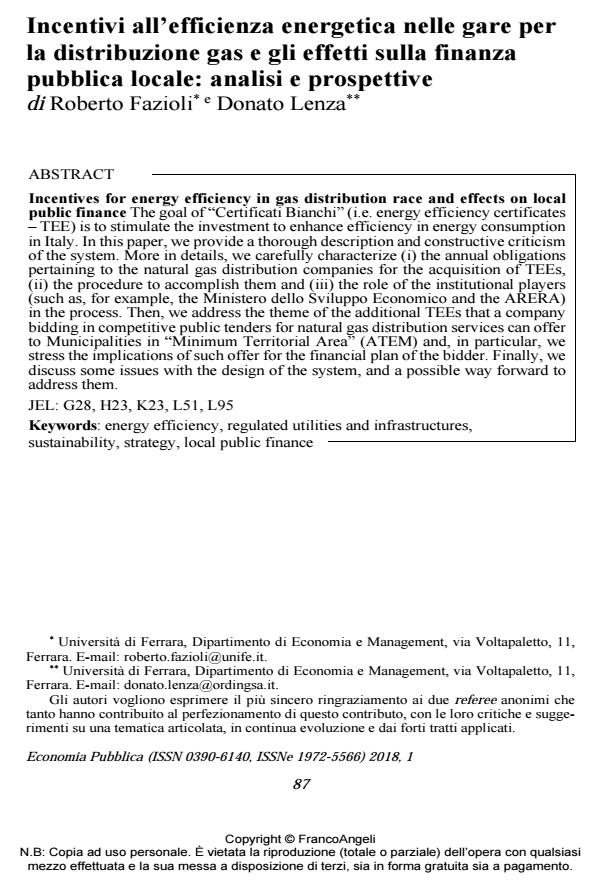Incentives for energy efficiency in gas distribution race and effects on local public finance
Journal title ECONOMIA PUBBLICA
Author/s Roberto Fazioli, Donato Lenza
Publishing Year 2018 Issue 2018/1
Language Italian Pages 36 P. 87-122 File size 340 KB
DOI 10.3280/EP2018-001004
DOI is like a bar code for intellectual property: to have more infomation
click here
Below, you can see the article first page
If you want to buy this article in PDF format, you can do it, following the instructions to buy download credits

FrancoAngeli is member of Publishers International Linking Association, Inc (PILA), a not-for-profit association which run the CrossRef service enabling links to and from online scholarly content.
The goal of "Certificati Bianchi" (i.e. energy efficiency certificates - TEE) is to stimulate the investment to enhance efficiency in energy consumption in Italy. In this paper, we provide a thorough description and constructive criticism of the system. More in details, we carefully characterize (i) the annual obligations pertaining to the natural gas distribution companies for the acquisition of TEEs, (ii) the procedure to accomplish them and (iii) the role of the institutional players (such as, for example, the Ministero dello Sviluppo Economico and the ARERA) in the process. Then, we address the theme of the additional TEEs that a company bidding in competitive public tenders for natural gas distribution services can offer to Municipalities in "Minimum Territorial Area" (ATEM) and, in particular, we stress the implications of such offer for the financial plan of the bidder. Finally, we discuss some issues with the design of the system, and a possible way forward to address them.
Keywords: Energy efficiency, regulated utilities and infrastructures, sustainability, strategy, local public finance
Jel codes: G28, H23, K23, L51, L95
Roberto Fazioli, Donato Lenza, Incentivi all’efficienza energetica nelle gare per la distribuzione gas e gli effetti sulla finanza pubblica locale: analisi e prospettive in "ECONOMIA PUBBLICA " 1/2018, pp 87-122, DOI: 10.3280/EP2018-001004